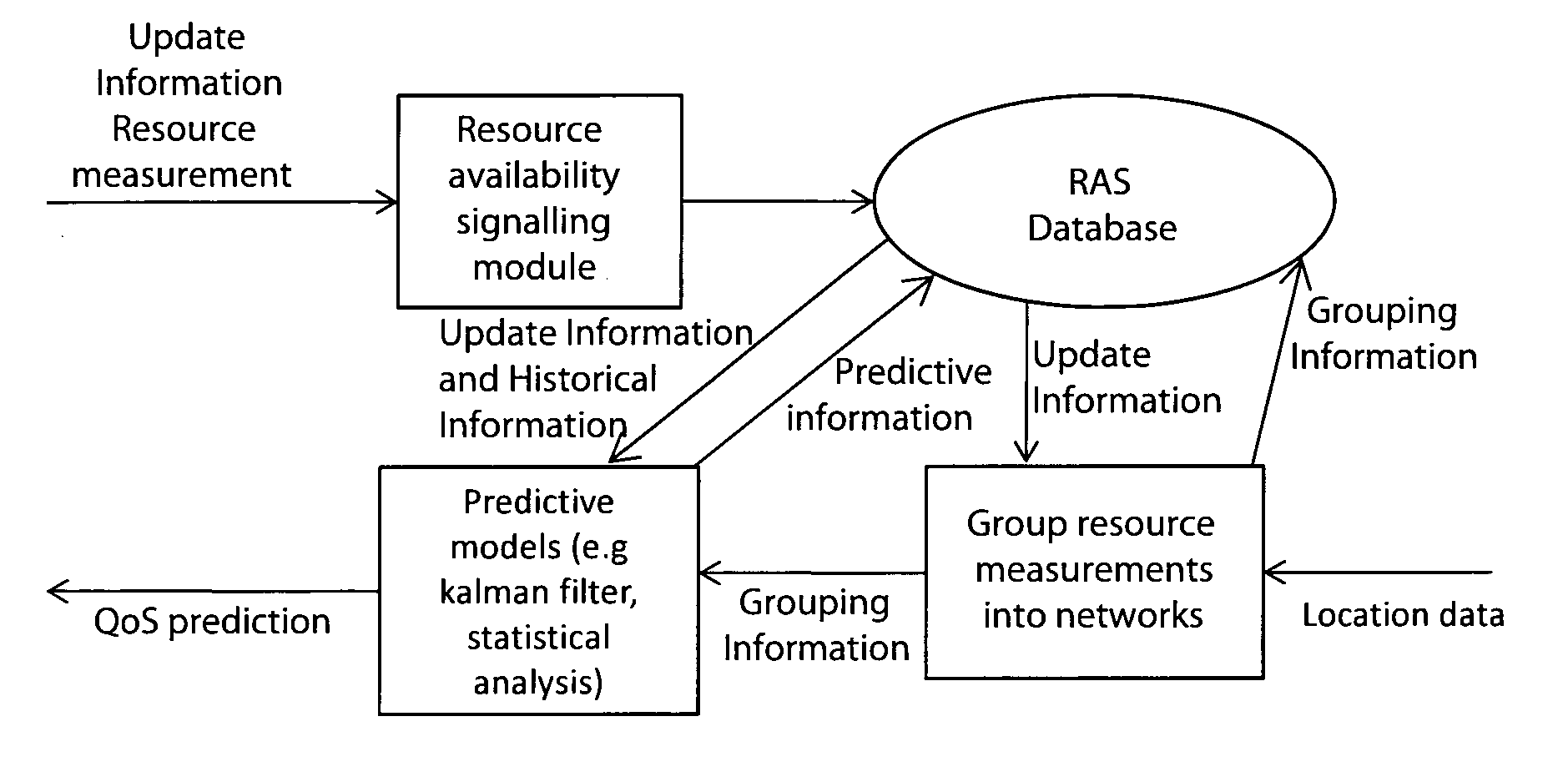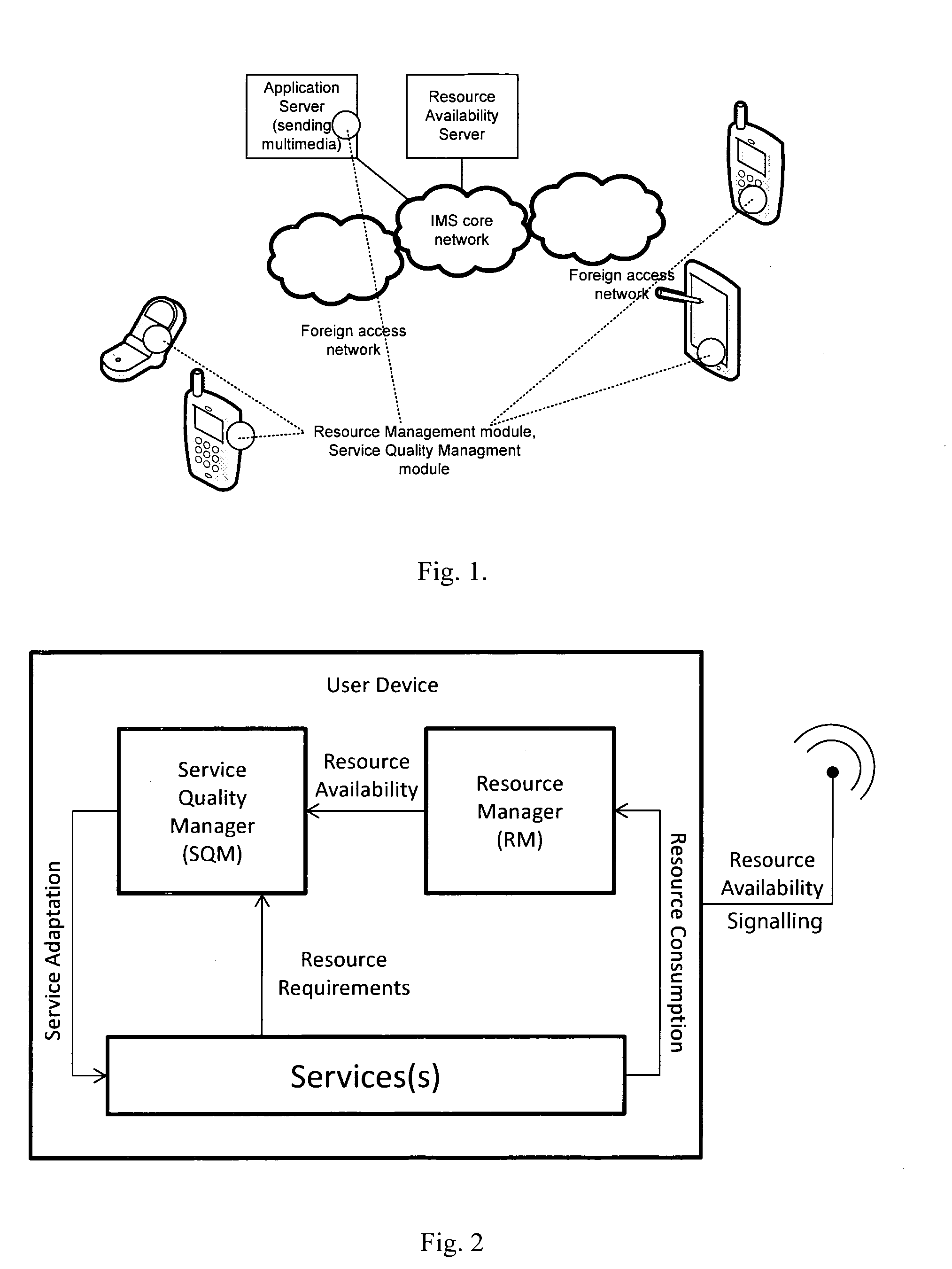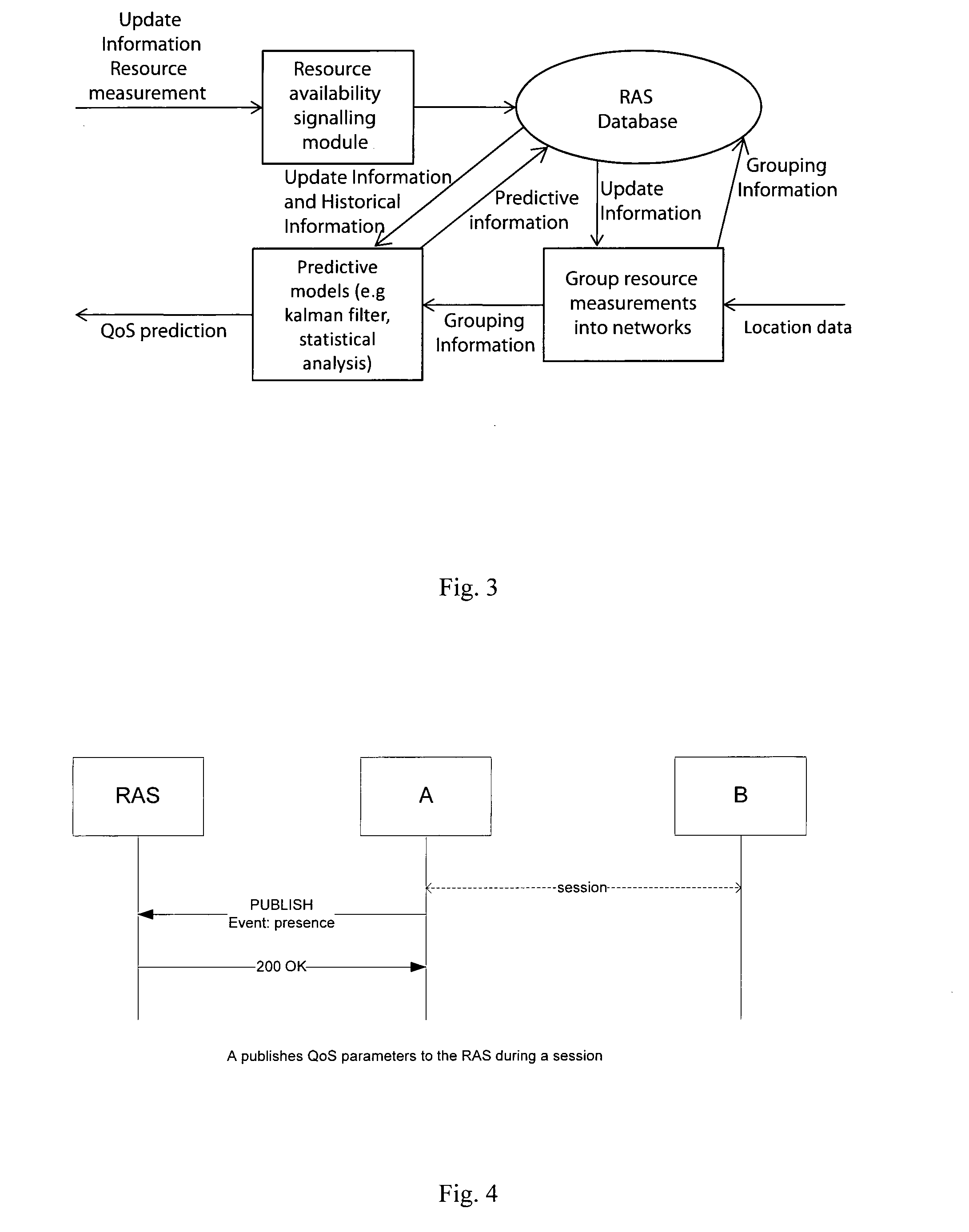Network resource management
a network resource and resource management technology, applied in the field of packet network, can solve the problems of lack of end-to-end qos control, inability to control the quality of service offered by such access networks, and inability to achieve end-to-end qos control, etc., to improve the quality of service for sessions, improve service quality, and improve service quality
- Summary
- Abstract
- Description
- Claims
- Application Information
AI Technical Summary
Benefits of technology
Problems solved by technology
Method used
Image
Examples
Embodiment Construction
Brief Description of the Drawings
[0061]The invention will be more clearly understood from the following description of some embodiments thereof, given by way of example only with reference to the accompanying drawings in which:—
[0062]FIG. 1 is a diagram illustrating at a high level items involved in implementing the invention:
[0063]FIG. 2 is a block diagram of a user device;
[0064]FIG. 3 is a diagram illustrating resource availability server (RAS) components;
[0065]FIG. 4 is a diagram illustrating publishing of QoS parameters to the RAS during a session:
[0066]FIG. 5 is a diagram illustrating an S-CSCF querying the RAS to determine if it should allow a new session setup;
[0067]FIG. 6 illustrates messages for the RAS to notify a video server about upcoming network congestion; and
[0068]FIG. 7 illustrates messages for the RAS to notify clients about upcoming network congestion.
DESCRIPTION OF THE EMBODIMENTS
[0069]The invention provides real time dynamic resource management to improve end-to...
PUM
 Login to View More
Login to View More Abstract
Description
Claims
Application Information
 Login to View More
Login to View More - R&D
- Intellectual Property
- Life Sciences
- Materials
- Tech Scout
- Unparalleled Data Quality
- Higher Quality Content
- 60% Fewer Hallucinations
Browse by: Latest US Patents, China's latest patents, Technical Efficacy Thesaurus, Application Domain, Technology Topic, Popular Technical Reports.
© 2025 PatSnap. All rights reserved.Legal|Privacy policy|Modern Slavery Act Transparency Statement|Sitemap|About US| Contact US: help@patsnap.com



